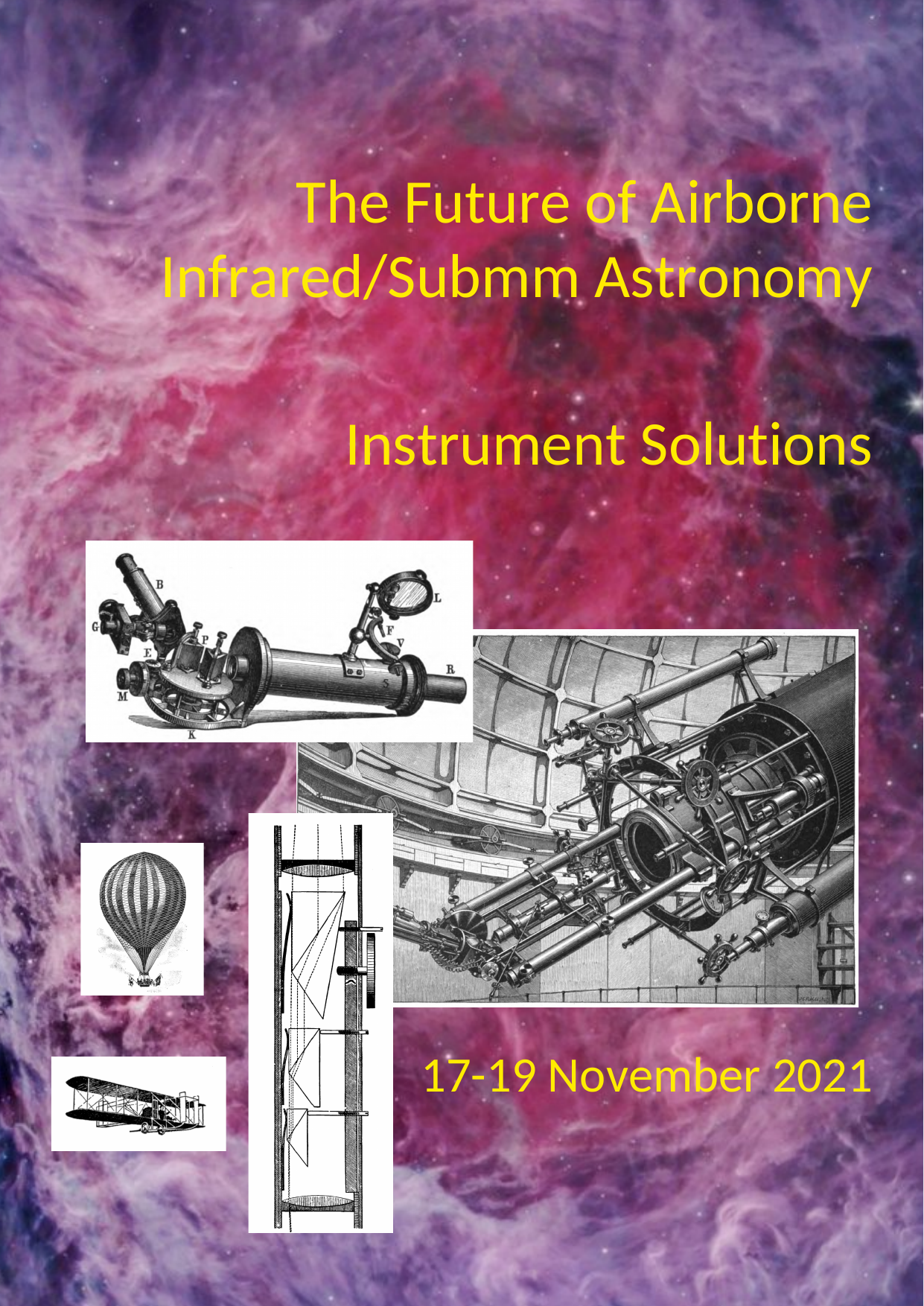This online workshop, planned for 17-19 of November 2021, will discuss technological options for new Infrared/Submm instrumentation. The focus will be on devices carried by airborne platforms that can be built within the next decade by European institutions, in order to fill the large gap for the astronomical community, until new space observatories for these wavelengths become available again. It is the second of two workshops, where the first, held in July 2021, provided the scientific priorities of European Infrared/Submm astronomy with a clear need for continuing observational capabilities at these wavelengths.
About half of the energy that was emitted by stars during the lifetime of the Universe has been absorbed and re-emitted by dust and gas at Infrared/Submm wavelengths. The dust in the early stages of Galaxy formation, the energy budget of the ISM, and the formation of stars and planets can be observed in this range, which due to absorption in the Earth’s atmosphere, is largely invisible to ground-based telescopes. To study these and many more phenomena in this range, astronomers require a next generation of focal plane filling, multi-pixel spectrometers that provide different trades between spectral resolution and sensitivity, employing novel detector technologies for direct detection at shorter wavelengths and coherent detection at longer wavelengths. In this second workshop we invite instrument developers to present their ideas of new, innovative instrument solutions to address the science questions which were identified in the first workshop, of which a summary is now available.
The platforms for such new instrumentation are either the airborne SOFIA observatory or balloons. SOFIA is operating regularly and with increasing efficiency for the last eight years, while there are also existing and some more planned balloon-borne experiments, each offering complementary abilities and advantages. The workshop will provide space to discussing technological instrument solutions as well as availability of essential technologies, development timelines and funding possibilities.
With the help of the scientific community, we seek to formulate a European perspective on Infrared/Submm instrumentation, that is inclusive of all airborne platforms and will work in synergy with the recent publication of NASA's SOFIA instrument roadmap for the next decade. Such a plan will continue to energize the field, provide new opportunities to observers and instrumentalists, and be a clear reference for proposals to funding agencies.
A summary of the key science goals from the first workshop and the instrumentation solutions from the second workshop will be presented in a white paper about three months later.
The registration is free and starts on 15 September 2021.
The registration deadline is on 12 November 2021.
Abstract submissions are invited. The deadline is 15 October 2021.
The final schedule will be published on 22 October 2021.
Image Credits: Orion from APOD 2016 May 17: Infrared: NASA, Spitzer Space Telescope; Visible: Oliver Czernetz, Siding Spring Obs. "Die Spectralanalyse Der Gestirne" Julius Scheiner 1898 "Balloons, Airships, and Flying Machines" Gertrude Bacon "The Early History of the Airplane:" Orville Wright, Wilbur Wright

